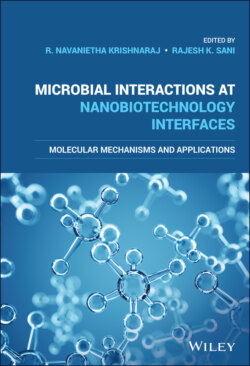Читать книгу Microbial Interactions at Nanobiotechnology Interfaces - Группа авторов - Страница 34
1.5.1.2 Antibiotic Efflux
ОглавлениеThe second most common mechanism of antibiotic resistance is antibiotic efflux and permeability barrier. As we discussed earlier, the permeability barrier mechanism is mostly availed by the greatest number of Gram‐negative bacteria. The presence of an extra outer membrane in Gram‐negative bacteria exhibits a barrier against hydrophilic antimicrobial agents and antibiotics such as vancomycin. However, a mutation in the genes related to outer membrane such as porin or even change in their expression level makes them vulnerable to hydrophilic antibiotics (Li et al., 2012).
The antibiotic efflux pumps in bacteria are categorized into five different families: ATP‐binding cassette (ABC), major facilitator superfamily (MFS), resistance–nodulation–division (RND), small multidrug resistance (SMR), and multidrug and toxin extrusion (MATE) (Sun, Deng, & Yan, 2014). Among these, only ABC family proteins use ATP as an energy source for efflux whereas the rest couple the export of their substrate with ion gradients. The acquired determinants of the efflux system are generally located on the plasmids in the pathogenic bacteria such as Tet genes. At least 22 genes have been identified in both Gram‐positive and Gram‐negative bacteria (Roberts, 2005). In pathogenic bacteria, the resistance–nodulation–division (RND) pump systems are operative synergistically with the Tet pump systems. The simple Tet protein effluxes the tetracycline into periplasm where RND captures and exports it outside. This is the plausible reason for increase in the minimum inhibitory concentration of tetracycline against pathogenic bacteria (Lee et al., 2000).
